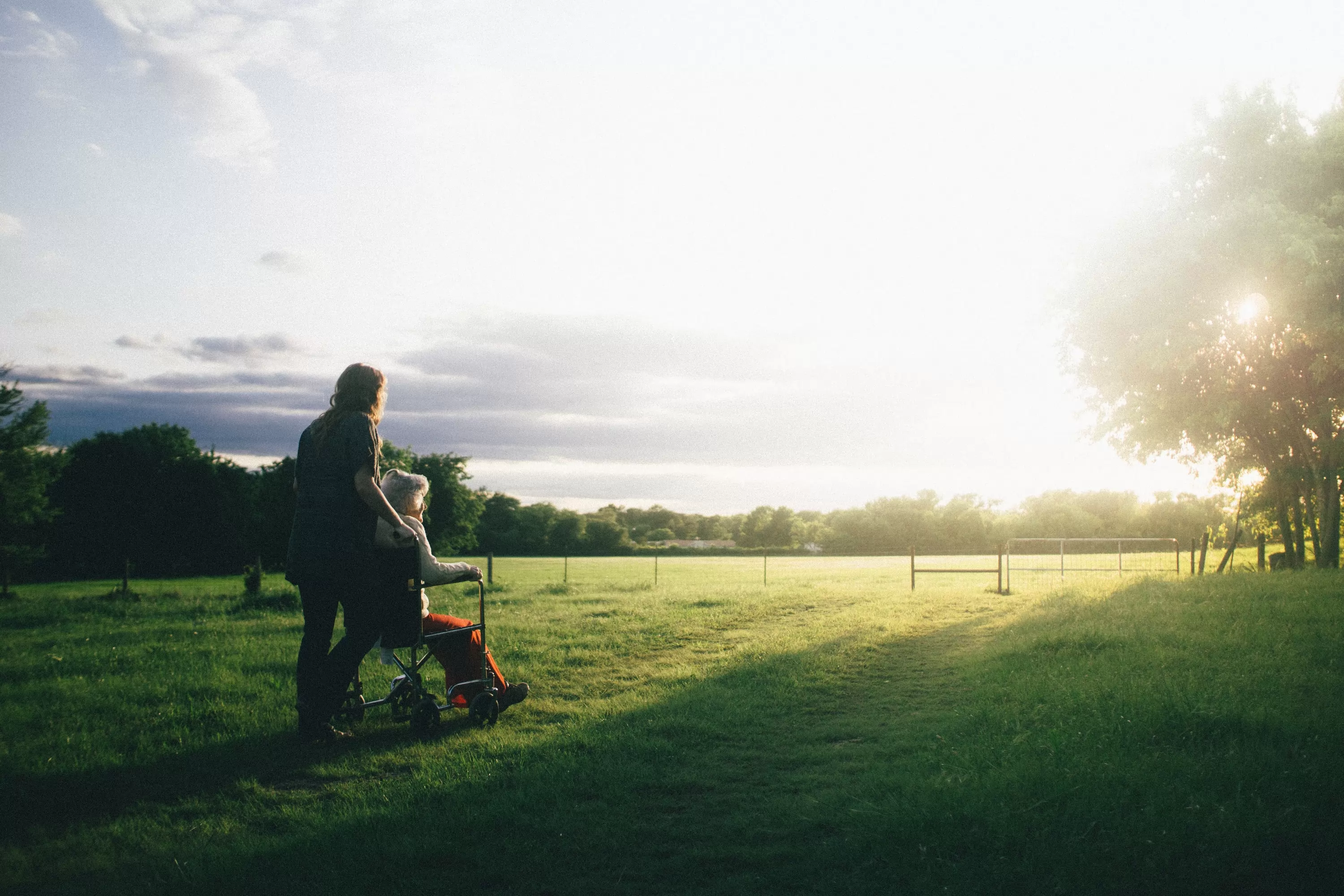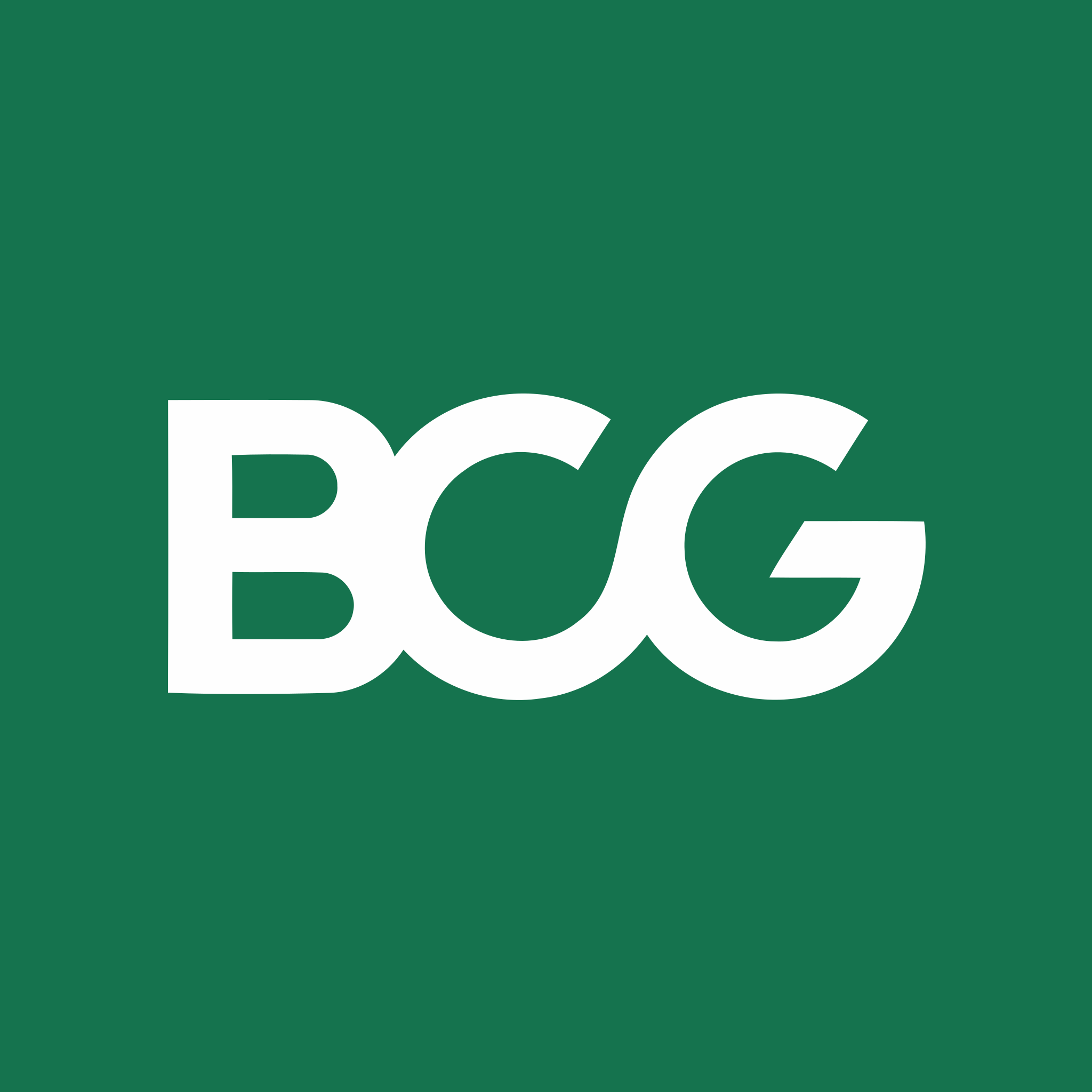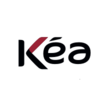Summary of our market study
The global skilled nursing facility market has experienced growth, with its value rising from $315.52 billion in 2021 to an estimated $362.2 billion in 2023. It is projected to reach $592.10 billion by 2030, growing at a CAGR of 7.2% from 2021 to 2030. Skilled nursing facilities (SNFs) and nursing homes are the key segments in this market, providing specialized staff and 24/7 care with SNFs focusing on short- to medium-term care and nursing homes on long-term care.
The demand for such services is driven by an aging global population, which constitutes 8.5% of the population and is expected to hit 2 billion by 2050. Chronic diseases like heart problems, Alzheimer's disease, cancer, diabetes, and dementia also contribute to the growth. Geographically, North America leads the market with a revenue share of 49.27% in 2022, followed by the rapidly growing Asia Pacific and Latin America regions, while the Middle East and Africa have underdeveloped markets due to inadequate facilities and policies.
Trends in the UK Elderly Care Market
The UK elderly care market has been shaped by several significant trends, which are expected to continue driving demand for both residential and nursing facilities. The market is heavily influenced by demographic shifts, particularly an aging population that requires an increasing level of long-term care. The elderly population in the UK, defined as those aged 65 years and older, is substantial, ranging between 10 and 15 million individuals, which accounts for nearly 20% of the national population. Of this number, a sizeable proportion, between 25 and 30%, is expected to be dependent on some form of elderly care. As the population ages, the demand for skilled nursing facilities and nursing homes continues to rise. Skilled nursing facilities, designed for short- to medium-term care, coexist with nursing homes that offer long-term care solutions. The other side of the market consists of residential care homes, offering a lower level of day and night care without the medical provisions found in nursing homes.
The market for these residential options has witnessed an annual growth of about 1%, with projections suggesting continued expansion owing to the escalating elderly population. Financially, the market for elderly care facilities in the UK represents a multi-billion pound industry, with estimates placing it around £7 billion. This sizeable market continues to face numerous challenges, including recruitment difficulties, operational cost increases, and a shortfall in the creation of new care facilities. The procurement and prescription of medicines within these facilities are managed systematically, with care home staff coordinating with residents' GPs to ensure appropriate medication and care provision.
The UK elderly care market is quite fragmented, with small and medium-sized providers dominating the landscape. Despite this fragmentation, a few large providers account for a substantial share of care home beds, yet no single provider alone represents an overwhelming majority. It's noteworthy that in the year 2021, about one third of care home residents were self-financing, contrasted with a larger proportion dependent on local council support. Nationally, spending on public health is vigorous, with the UK allocating a notable portion of its GDP to this sector, indicative of the crucial nature of health services to the economy. In terms of care home occupancy, the sector has faced fluctuations due to events such as the COVID-19 pandemic, with reductions seen from previous levels of around 89% occupancy to approximately 80%. From a regulatory perspective, entities like the Care Quality Commission in England and others in Scotland, Wales, and Northern Ireland oversee the standards and quality of care provided.
Leading Figures in the UK Care Home Industry
As the demographics shift towards an aging population, the care home industry in the United Kingdom has become a pivotal sector in healthcare. Among the vanguard of this industry are several key players that have established themselves with significant market presence and impact. These organizations have risen to prominence by offering a blend of specialized services to cater to the diverse needs of the elderly population, often setting standards for care and excellence within the sector.
- HC-One Limited takes a leading role as a major provider in the UK care home market. It has established itself through a vast network of care homes across the country, often lauded for their compassionate and individualized care. HC-One's contribution to elderly care encompasses not only attention to the health and wellbeing of their residents but also extends to creating a nurturing environment for social interaction and a sense of community.
- Barchester Healthcare Limited is another titan in the industry, known for its high standards of care and upscale facilities. They provide a luxurious living experience for seniors, with amenities and services that cater to the comfort and well-being of their residents. Barchester Healthcare's commitment to care quality and service excellence has made them a preferred choice for those seeking a superior residential or nursing care experience. Both HC-One and Barchester Healthcare exhibit a keen understanding of the shifting needs within the care home sector, consistently adapting their services and facilities to provide optimal care. As critical players, they contribute not only by serving the needs of current generations but also by shaping the future of care home standards in the UK.
These organizations embody the strength and commitment required to serve the complex and growing demands of the aging population. They are exemplary in their individual approaches to care, reflecting the industry's ability to evolve and cater to varying preferences and care requirements. As the sector continues to expand, entities like HC-One and Barchester Healthcare will likely keep playing a significant role in defining the landscape of elderly care in the United Kingdom.
to understand this market
Detailed content of our market study
 Inforamtion
Inforamtion
- Number of pages : 35 pages
- Format : Digital and PDF versions
- Last update :
 Summary and extracts
Summary and extracts
1 Synthèse du marché
1.1 Definition of the market
Geriatric care is long-term residential care for the elderly, i.e. people aged 65 or older. From one hand, such care is often provided in facilities, where the elderly do not need 24-hour care, but remain unable to live independently, such as assisted living facilities. Their main characteristics are:
- the offer of rooms already provided or not.
- house cleaning services, laundry and meals
- assistance with daily activities (personal hygiene, dressing, eating, and walking)
- They are not medical facilities
On the other hand, geriatric care can also be offered in residential care homes and nursing homes for people who need continuous care and help with daily activities. The nursing home is often a permanent residence for a person who cannot take care of themselves, but is not ill enough to need hospitalization [seniorliving]. Both nursing homes and residential care homes provide care and support 24 hours a day, however the main difference is that a nursing home is able to provide a higher level of care [carehome].
In the United Kingdom, the care market for residential care homes and nursing homes is expected to grow by 1% annually, driven by the aging population and the increase in elderly dependency. In 2032, it's expected there will be 13 million people aged 65+, representing 22% of the UK total population.
However, with supply outstripping demand, the market has been characterized for several years by significant challenges. In particular, the slowdown in the creation of new facilities and, lack of financing and recruitment difficulties are central issues.
The UK market is fragmented, with few providers that hold only 15% of all care home beds, while the top 25 account for 31% [Marketbeat]. It means that the care home market is the prevalence of small and medium-sized providers. Moreover, the local authority funding is the first form of revenues of the providers, followed by private payments.
1.2 The global skilled nursing facitily market
In ****, the global skilled nursing facility market, which includes nursing homes, was valued at ***.** billion dollars, instead $***.* billion in ****. The value of the market is expected to reach $***.** billion by ****, with a recorded CAGR of *.*% during the forecast period **** - ****.
The market includes skilled nursing facilities and nursing homes. Both guarantee the availability of qualified and experienced staff, **/*, but the latter offer long-term care, while SNFs offer short- or medium-term care.
World Market Value of Skilled Nursing Facilities World, **** - ****, in billions of dollars Source: ****
The increasing demand for nursing homes is mainly due to the growing elderly population in many countries around the world. National Institute estimates that the population aged ** and over constitutes *.*% of the global population. Furthermore, the geriatric population is expected to reach * billion by ****, also globally. The second main market growth factor is related to the spread and prevalence of chronic diseases, such as heart problems, Alzheimer's disease, cancer, diabetes and dementia. Finally, other factors include the increase in life expectancy and care needs of the elderly.
The market between different geographical areas of the world
The strong demand for long-term care especially in developed countries such as North America, followed by Europe, has strongly contributed ...
1.3 The UK care home market
The care home market in the United kingdom is made up by residential and nursing facilities. According to Invoice funding the UK care home market was estimated £*.* billion by **** and between **** and ****, the industry is expected to grow by *.*% annually.
Care home market size UK, ****-****, in billion £ Source: ****
Just as in the global market, there is an increasing demand for care homes on a national level due to the aging population. According to Eurostat, in the UK, dependency among the elderly reaches nearly **%, or *,***,***, of older people in ****. Moreover, according to the Center for Ageing Better in ****, there are over ** million people aged **+, representing **% of the total population, while, it's expected there will be ** million people aged **+, representing **% of the total population, in ****.
Nowadays, the care home market is experiencing difficulties due to a widespread lack of personnel and public investment. Invoice Funding, writes that the NHS and local governments have reduced payments to patients to levels substantially below the cost of operating care facilities due to the public commitment. However, from the graph below, it can be seen that the United Kingdom spends a large proportion of its GDP on public health, at **.* per cent, placing the country among ...
1.4 The effects of the pandemic and energy crisis
Effects on care home occupancy rate
Health care residences, including nursing homes, have been one of the sectors most affected by the COVID pandemic. The causes can be traced back to the presence of elderly people, considered as a highly vulnerable group. A meta-analysis found that the age-specific infection mortality rate is very low for children and young adults, but gradually increases to *.*% at age **, *.*% at age **, *.*% at age ** and **% at age **.
Due to the pandemic, the nursing home occupancy rate dropped from **% in **** to **.*% in Q* ****.
Care home occupancy rate UK, ****-Q* ****, in percentage Source: ****
Effects on the drug supply chain
The pandemic in the past has affected the drug supply chain around the world. In particular, it created logistical and production problems, mainly for active pharmaceutical ingredients (***). Indeed, in recent years, several governments have encouraged reshoring practices of companies that had taken manufacturing processes abroad to avoid the high costs at home. Financial Times, in ****, writes that three-quarters of companies are implementing theirs British suppliers and reducing reliance on Asian suppliers.
Moreover, the war between Russia and Ukraine has caused an energy crisis that is threatening these reshoring plans. Medicines for Europe, warns that raw material costs have risen ...
2 Analyse de la demande
2.1 Demographic characteristics
According to the below data, older women are more numerous than older men: the proportion of women is greater than that of men for people over **, and this proportion increases with age. Thus, women between ** and ** years of age represent **% of the people in this age group against **% for men, and for the ***+ this female share increases to **% against **% for the male share. We can therefore assume that this proportion is respected in the care facilities for the elderly.
If we look at the distribution between men and women, we can see that, in ****, there were in total **% of senior men against **% of senior women. This characteristic is found in all age groups, and the difference becomes more pronounced as age increases, as the table below shows.
Source: ****
The United Kingdom, in ****, has a senior population aged ** years or older of nearly **.* million, accounting for just under ** percent of the national population. The table below shows the percentage of seniors by age group on the total number of seniors.
Source: ****
2.2 Distribution of the elderly population between nursing homes and care homes
The following table shows the average age in nursing and care homes, UK, ****-****.
Type of facility **** **** **** Residential care home ** ** ** Nursing home ** ** **
Source: ****
The following table shows, instead, the length of stay in residential care and nursing homes, UK, ****-****.
Age group Male Female **-** ans *.* years * years **+ ans *.* years *.* years
Source: ****
3 Structure du marché
3.1 Structure of the market
In the UK care homes can be of different forms, private or public, and financed by different legal entities. The graph below shows the percentages by which care homes were funded in the UK in ****. The main form of funding is local (***).
Funding sources within UK care homes UK, ****, in percentage Source: ****
In ****, there were approximately *.* thousand companies engaged in residential care for the elderly and disabled in the UK.
Facilities active in residential care for the elderly and disabled UK, ****-****, in absolute value Source: ****
The UK elderly care market is pretty fragmented. It is evident looking at the top * operators which offer only **% of beds. In ****, HC-One Ltd was the largest care home operator in the United Kingdom (***) and Barchester Healthcare completed the top three with **,*** and **,*** beds respectively.
Leading operators by care home beds UK, ****, in absolute value Source: ****
3.2 Procurement and prescription of medicines
Procurement
Procurement is done by the care homes from the pharmacies. There are * ways of managing the supply between the pharmacy and the care home:
MDS (***): The medicines are received in large quantities by the pharmacy in large plastic containers. The pharmacy is responsible for unpacking and repackaging the medicines into smaller containers, which facilitate administration once in the care home. This technique is being phased out because of the lack of traceability.
OPD (***): It which means that the medicines are sent in their original packaging and the nursing home staff are responsible for organising and distributing them.
Prescription
Considering that care home residents are entitled to the basic medical care they would get for free in their own homes, most care homes do not have a doctor assigned to the residents, the residents keep their usual General Practitioner GP [***].
However, care home managers must ensure that their residents have a GP who is able to provide an appropriate level of care to their patients. These are usually the general practice services commissioned by the regional NHS teams, who are responsible for diagnosing and prescribing medication to their patients.
GP practices must have a written procedure for prescribing and issuing prescriptions ...
3.3 Distribution of medical care
Providers and care home managers should take steps to ensure that residents have appropriate and quality primary care and general medical services.
There needs to be good communication between residential care staff and the GP or hospital responsible for the resident's diagnosis. Health care workers and practitioners need to work together to ensure that everyone knows when medication has been stopped, started or changed. Nursing home staff should update medication administration records as soon as possible with details of any changes to a person's medication.
The administration of medicines
In any facility, the administration of medication can be done by the resident him/herself according to the Mental Capacity Act, which states that a person must be presumed capable unless it has been established that he/she is not. Staff must therefore regularly assess whether or not a resident has the capacity to self-administer their medication.
For those who wish to do so or who have no choice but to have someone else administer their medication, this service is provided by trained and competent staff. Whether in residential care homes or nursing homes, all staff employed by the home who are responsible for the management and administration of medicines must be ...
4 Analyse de l'offre
4.1 Typology of the offer
Residential care home
The term 'residential' means that people can treat the facility as their home and live there while having access to the many services available on site. Residential care homes usually have their own café and lounge, as well as a garden which allows people to get some fresh air. They also usually offer social activities such as excursions or outings. Each residential care home is regulated by the Care Quality Commission (***). After each inspection, a rating is given to the home, ranging from inadequate to outstanding. These ratings are publicly available for each care home.
This type of residence is for people who need help throughout the day and night with 'low level' care: eating, washing, dressing, toileting or taking medication.
Nursing homes
In contrast to residential care homes, nursing homes provide nursing care, as they are intended for people who need specialised and/or complex medical care by qualified nurses. They provide health care to treat a medical problem. Nurses are present ** hours a day to provide specialised care to residents.
This type of residence is for people who need help throughout the day and night with so-called 'low-level care' but also with medical care because they ...
4.2 Pricing
Since nursing homes provide a higher level of care than residential care homes, they have higher prices depending also on the type of care needed and the location of the facility. However, both facilities provide care and support ** hours a day.
The average weekly cost of residential care in the UK is £***, while the average cost of living in a care home is £***.
Source: ****
The table below gives more details on the geographical area and the type of provided care. In general, nursing care costs more as it is more specialised and more expensive in England and Wales. Residential and nursing care in Northern Ireland and Scotland costs less.
Source: ****
5 Règlementation
5.1 Regulatory framework
In England, the Care Quality Commission CQC is the independent body that regulates health and social care. It is the body responsible for inspecting the quality of services and rating care homes and nursing homes around the country. To do this it uses a set of standards called 'Fundamental Standards' which cover aspects such as safety, effectiveness, caring, responsiveness, and leadership. The others in the UK are listed below, and they all have similar tasks, with the aim of verifying that facilities provide safe and high-quality care and that the rights and interests of residents are ensured.
Care Act ****
It regulates the provision of care and support for older people in England. In general it sets out the responsibilities of local authorities and care providers, while not neglecting the responsibilities of the people who receive them [***]. In particular, local authorities must ensure that:
people who live in their areas receive services that prevent their care needs from becoming more serious, or delay the impact of their needs. people who live in their areas can get the information and advice they need to make good decisions about care and support. people who live in their areas have a range of provision of ...
5.2 State subsidies
Support from the NHS (***)
If the need is mainly health-related, the NHS pays for ***% of the nursing home placement or pays for the nursing care costs directly related to other types of retirement accommodation.
Help from the local council
Depending on the area, the local council can help if the resident's resources are not sufficient. If the local council carries out a care needs assessment and finds that the person needs a place in a care home, it will carry out a means test to determine how much the person should contribute towards the cost of care. The means test takes into account income and capital, for example savings. Some types of income, such as money from some disability benefits, are ignored in the means test.
The means test measures the amount of a person's capital, and depending on this amount, the help offered by the local council varies. For England, the threshold is £**,*** of capital.
If the capital is higher than £**,***, the person has to pay the full cost, which is called self-funding. If the person's capital is between £**,*** and £**,***, the person must contribute to the cost according to their means by contributing all of their income (***). If the person's ...
6 Positionnement des acteurs
6.1 Segmentation
- Barchester Healthcare Limited
- HC-One Limited
All our studies are available online in PDF format
Take a look at an example of our research on another market!
 Choosing this study means :
Choosing this study means :
Access to more than 35 hours of work
Our studies are the result of over 35 hours of research and analysis. Using our studies allows you to devote more time and added value to your projects.
Benefit from 6 years' experience and over 1,500 industry reports already produced
Our expertise enables us to produce comprehensive studies in all sectors, including niche and emerging markets.
Our know-how and methodology enable us to produce reports that offer unique value for money.
Access to several thousand articles and paid-for data
Businesscoot has access to all the paid economic press as well as exclusive databases to carry out its market research (over 30,000 articles and private sources).
To enhance our research, our analysts also use web indicators (semrush, trends, etc.) to identify market trends and company strategies. (Consult our paying sources)
Guaranteed support after your purchase
A team dedicated to after-sales service, to guarantee you a high level of satisfaction. +44 238 097 0676
A digital format designed for our users
Not only do you have access to a PDF, but also to a digital version designed for our customers. This version gives you access to sources, data in Excel format and graphics. The content of the study can therefore be easily retrieved and adapted for your specific needs.
 Our offers :
Our offers :
The nursing home market | UK
- What are the figures on the size and growth of the market?
- What is driving the growth of the market and its evolution?
- What is the positioning of companies in the value chain?
- Data from several dozen databases


















